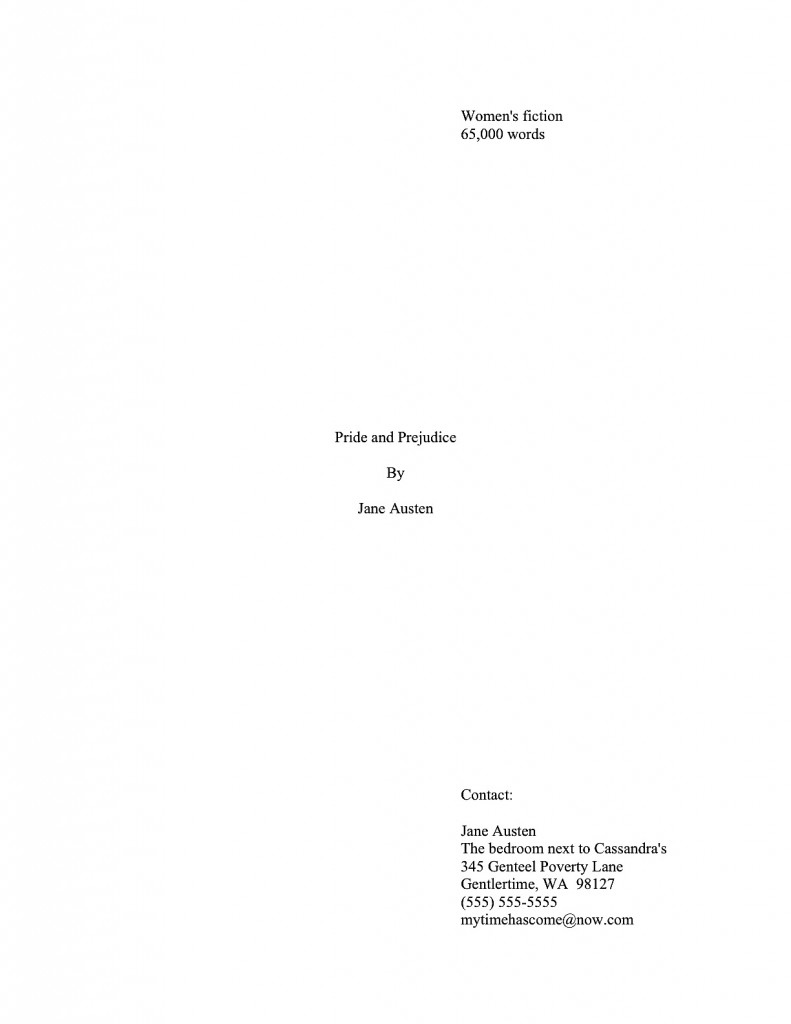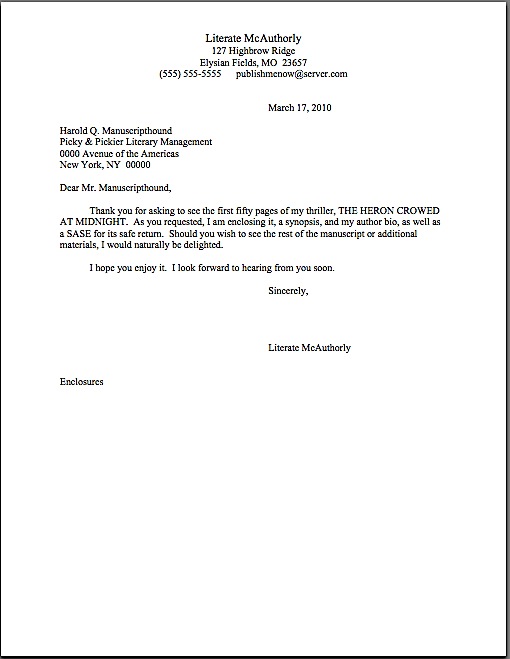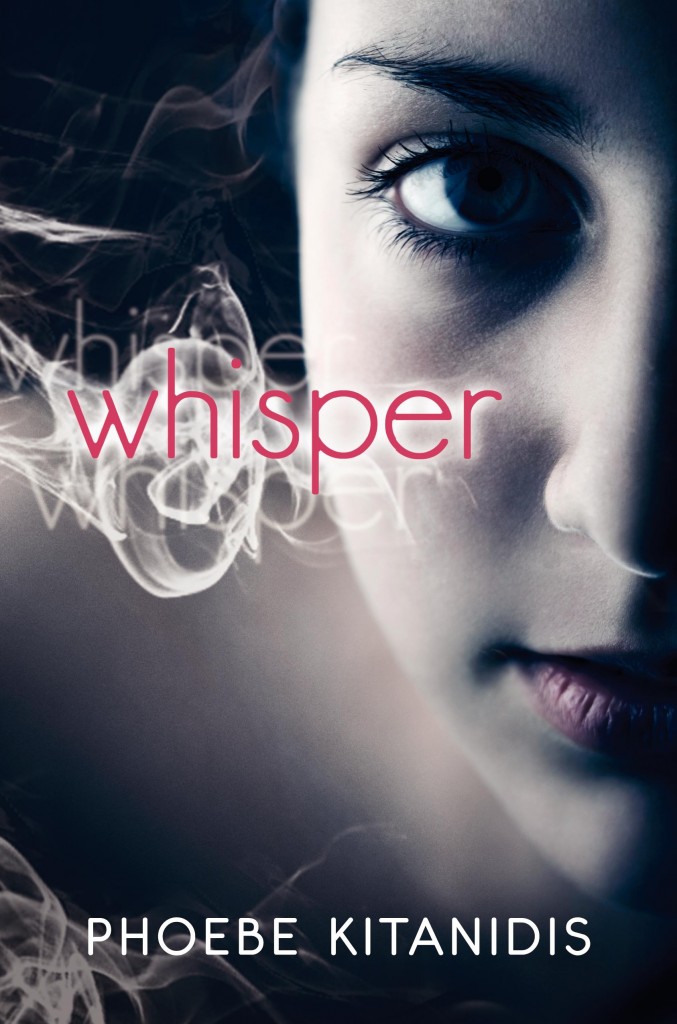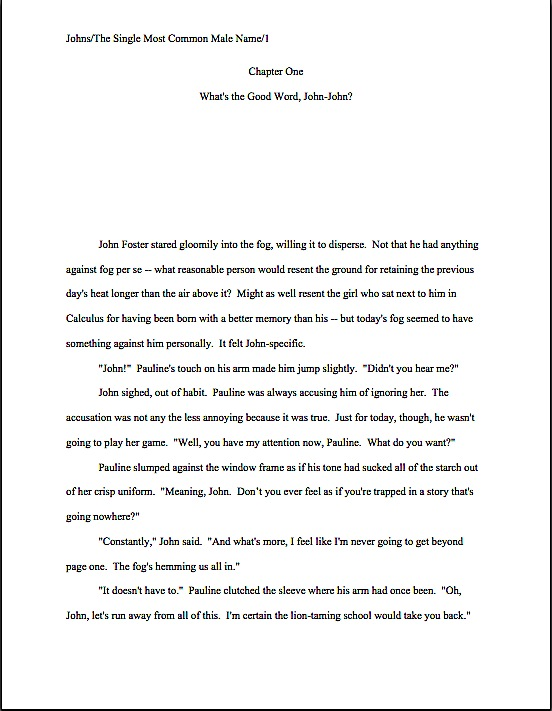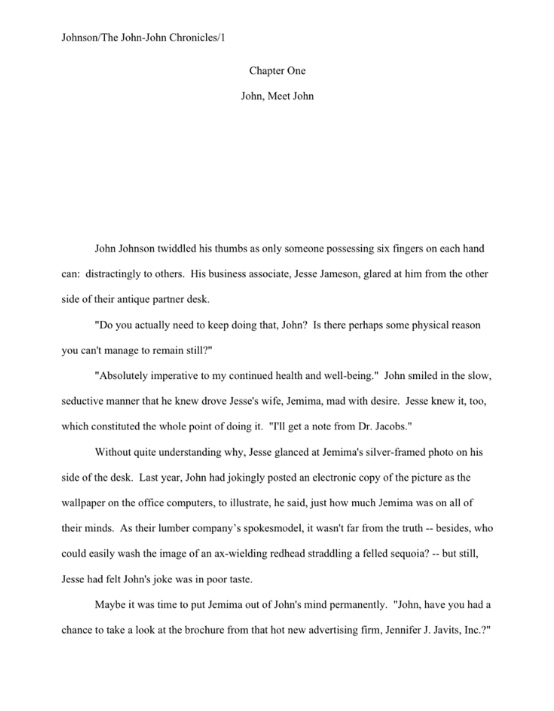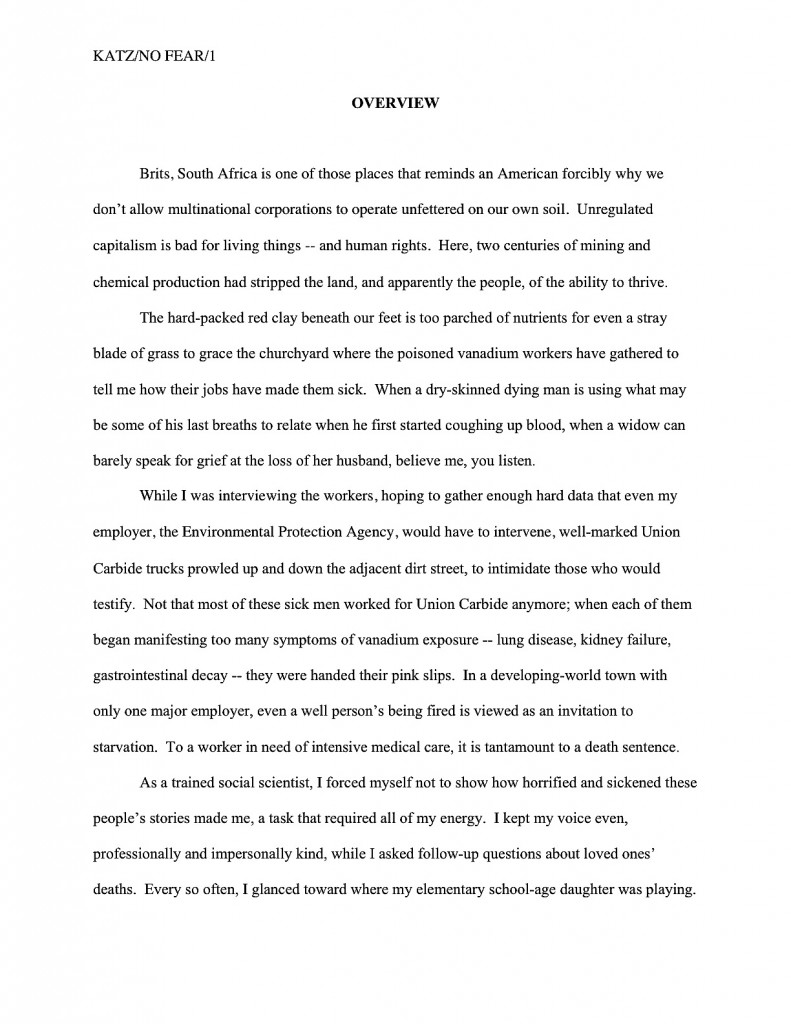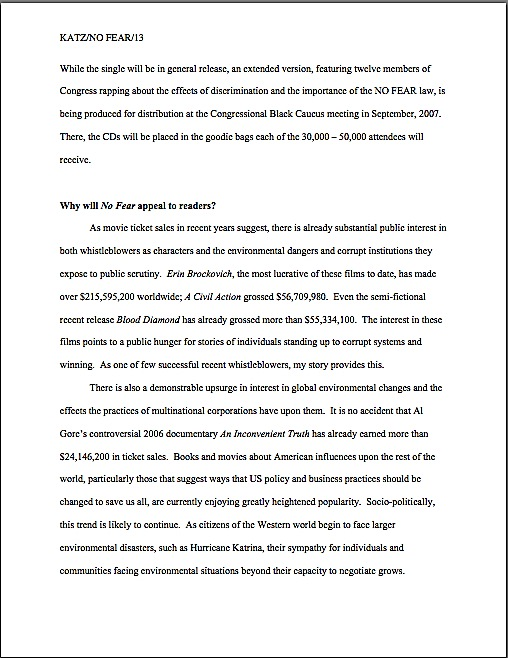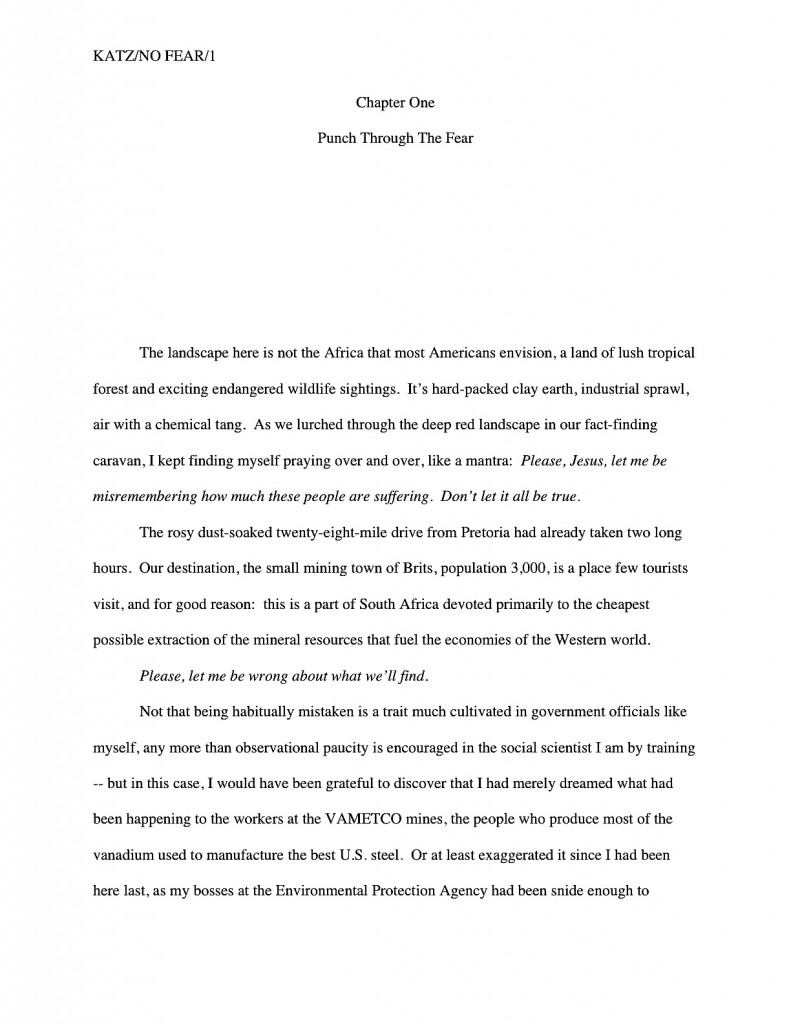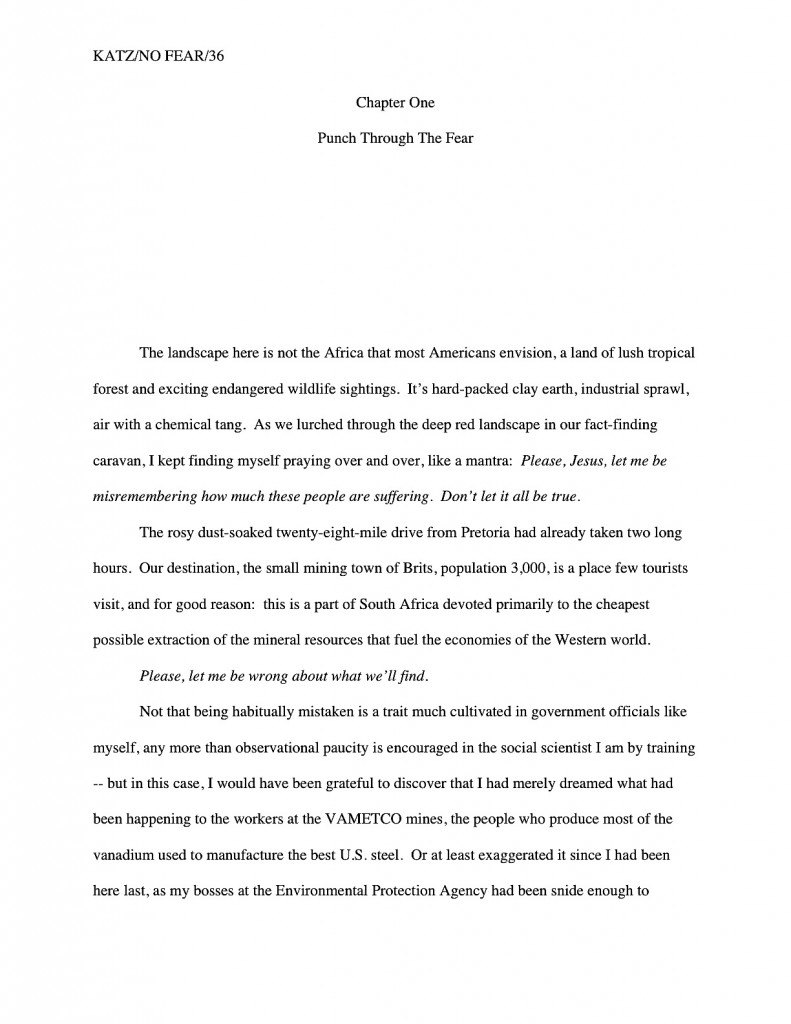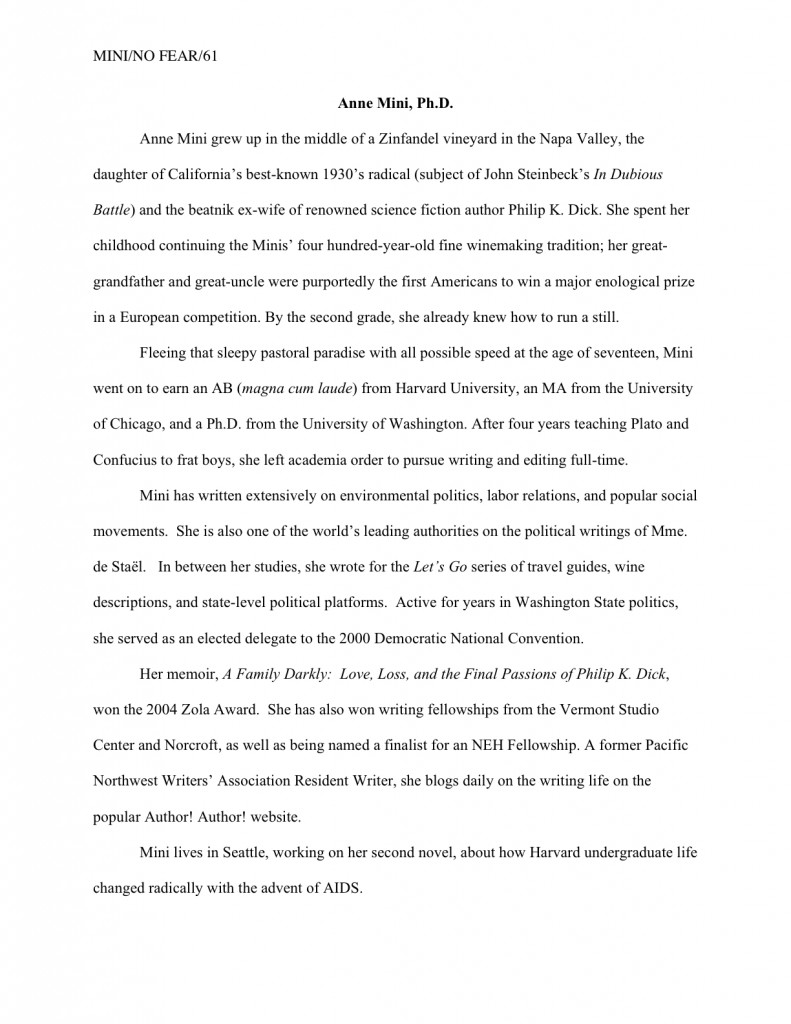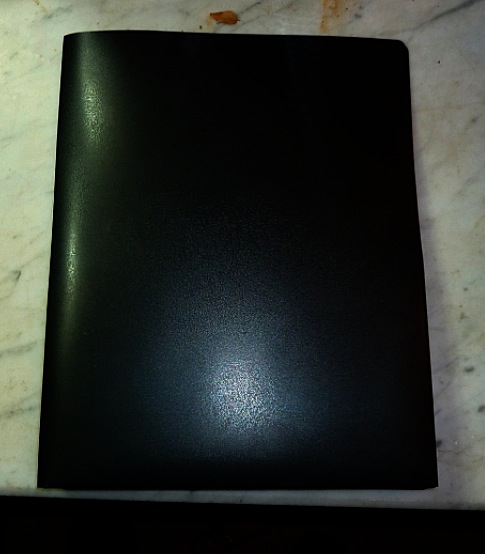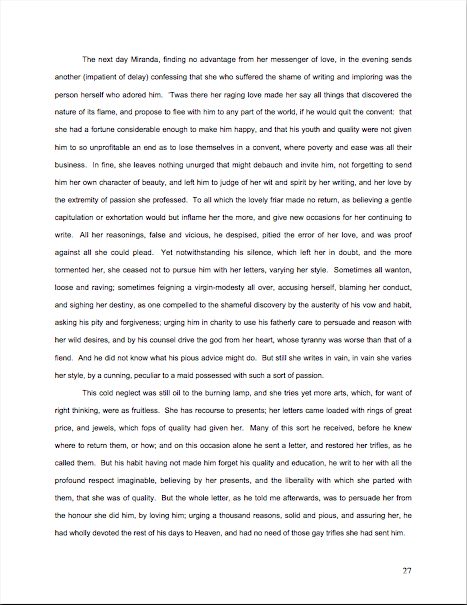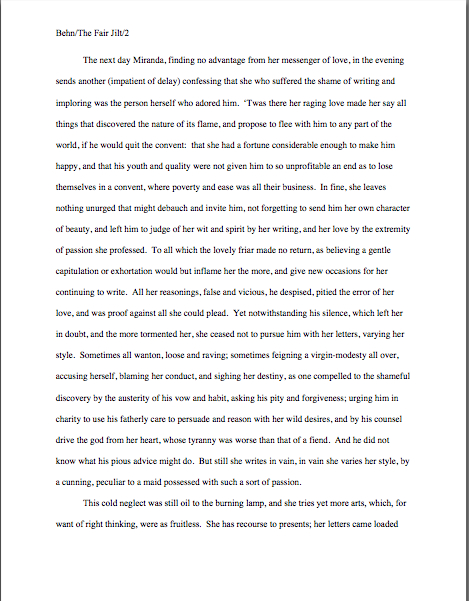
Fair warning, campers: I’m in a foul mood today. I’ve answered the phone for eight telemarketers so far this evening, seven of whom refused to believe that I have not been secretly operating the A+ Mini-Mart out of my home. My physical therapists’ office forgot that I had an appointment today, so I got dressed up in my silly gym clothes for nothing. A client’s deadline just got moved up by a couple of months, meaning that his manuscript was due, oh, yesterday.
All of that I could take with equanimity. What really got my proverbial goat were the two — count ‘em, two — aspiring writers who chose today to appear out of the blue and demand that I drop everything to pay attention to them, despite the fact that neither knows me well enough to be asking for a favor, let alone demanding it, and did so in the rudest manner imaginable. Not only that, but each was so self-absorbed that s/he actually became angry with me for setting limits on how much of my time I would allow them to co-opt.
I was really very nice about it, honest. But both evidently chose to believe that because they had faith in their talent, I owed them my professional attention. One even sent me a document, presumably for me to edit out of the goodness of my heart.
Because, obviously, I could not possibly have anything else to do. I could get back to stomping on Tokyo later.
I wish I could say that this kind of thing does not happen to those of us who are kind enough to give the occasional free advice to the aspiring, but truth compels me to say otherwise. In fact, this attitude is so pervasive that quite a few pros simply avoid giving any advice to up-and-comers at all.
Which is why, in case any of you recent conference-goers had been wondering, it can be very hard to ask some of the speakers a pertinent question or track down an attending agent for a hallway pitch. They’ve probably been the victims of aspiring writers who mistook momentary interest, the willingness to answer a complex question, or even just plain old politeness for a commitment to a lifetime of non-stop assistance. One doesn’t have to encounter too many such boundary-leapers to start erecting some pretty hefty walls in self-defense.
Oh, I understand the impulse to push it from the aspiring writer’s perspective: since can be so hard to catch a pro’s eye that when you meet someone in the know who is actually nice to you, it can feel like the beginning of a friendship. And it may be — down the line. But from the pro’s point of view, all that friendly interaction was, or could possibly be construed as being, is just that, a friendly interaction with a stranger.
So imagine the pro’s surprise when she arrives back in her office to find five e-mails from that stranger, each more desperate and demanding than the last.
Wildly different understandings of the same interaction are especially prevalent at conferences that schedule pitching appointments for attendees. Most first-time pitchers walk into their sessions so terrified that if the agent or editor smiles even a little and listens sympathetically, they just melt. Here, at last, is a personal connection in an industry that can seem appallingly impersonal from the outside. So when the agent or editor concludes the meeting with a fairly standard request for pages, these pitchers sometimes conclude that the pro only made the request to be nice; s/he couldn’t possibly have meant it.
That’s the less common reaction. The significantly more common is to act as though the agent or editor has already committed to taking on the book. If not actually serving as best man or maid of honor at the writer’s wedding.
Yes, really — I see it at conferences all the time. The writer rushes home, instantly prints up his manuscript, and overnights it to his new friend. Or she rushes home, opens her e-mail account, and instantly sends the requested pages as an attachment to her new friend. Even if they received requests from other agents or editors, they won’t send ‘em out — that might offend the new friend, who clearly by now has a deep stake in signing the writer.
Then both writers fill Hefty bags with Doritos and plop themselves down between their telephones and their computers, waiting for the positive response that will doubtless come any minute now. And they wait.
Many of them are still waiting, in this era where some agencies have policies where no response equals assumed rejection. Others are stunned to receive form-letter rejections that contain no mention of their positive personal interaction at the conference at all. Some are unwise enough to follow up upon either of these reactions with a hurt or angry e-mail to that faithless new friend.
Who will, I guarantee you, be mystified to receive it. “Why is this writer taking my rejection so personally,” they murmur to their screeners, “not to mention so unprofessionally? We talked for five minutes at a conference; it’s not as though I made a commitment to help him. It’s my job to talk to writers at conferences, after all.”
“Hey, look,” Millicent says, pointing at her boss’ e-mail inbox, “your new protégé has just sent you yet another e-mail. Ooh, there’s a third. And a fourth!”
The agent buries her head in her hands. “Cancel my e-mail account. I’m moving to Peru to become a llama herder.”
What we have here, my friends, is a failure to communicate. Agents, editors, conference speakers, and writing gurus are nice to aspiring writers, when they are, because they are nice people, not because any of us (not the sane ones among us, anyway) are likely to pick a single aspirant at random and decide to devote all of our resources to helping him. Any of us who interact with aspiring writers on a regular basis meet hundreds, if not thousands, of people just burning for a break, yet not one of us possesses the magical ability to stare deeply into the eyes of a writer we’ve just met, assess the talent coiled like a spring in that psyche, and determine whether she, alone of those thousands, is worth breaking a few rules to help get into print. Nor are most of us living lives of such leisure that we have unlimited time or resources to devote to helping total strangers.
Yes, yes, I know: this blog is devoted to helping total strangers along the road to publication, and I do in fact post almost every day. Don’t quibble; I’m on a roll here.
Yet that level of instant, unlimited devotion is precisely what many aspiring writers simply assume is the natural next step after a pleasant initial interaction with a publishing professional. While most, thank goodness, have the intrinsic good sense or Mom-inculcated good manners not to start demanding favors instantly or barrage that nice pro with e-mails asking for advice or a leg up, the few who do are so shameless that, alas, they give all aspiring writers a bad name.
The moral: sometimes, a pleasant conversation at a conference is just a pleasant conversation at a conference. Don’t assume that polite interest in your writing equals a commitment to help you promote it. And never, ever, EVER risk alienating the rare pro who is willing to give a little free advice by presuming that the proper response to an act of kindness is to treat it as an invitation to ask for still more favors.
Any buildings still standing, or have I smashed them all with my giant lizard feet?
Okay, I feel better now. Time to get back to doing today’s single professional favor for masses and masses of writers I have never met. After that, I’m off the charitable clock.
For the last couple of posts, I’ve been showing you examples of good and not-so-good 1-page synopses, so we could talk about (okay, so I could conduct a monologue about) the overarching strategies that rendered them more or less effective. Since the response so far has been no more traumatized than one might expect from writers faced with the prospect of constructing a 1-page synopsis for a 400-page novel of a complexity that would make Tolstoy weep, I’m going to assume that we’re all pretty comfortable with the basic goals and strategy of a 1-page synopsis intended for tucking into a query envelope or to copy and paste at the bottom of an e-mailed query.
Before I move on to the ins and outs of writing the longer synopsis, I feel I should respond to some of the whimpers of confusion I’ve been sensing coming from some of my more structurally-minded readers. “Hey, Anne,” some of you have been thinking quite loudly, “I appreciate that you’ve been showing us visual examples of properly-formatted synopses — a sort of SYNOPSES ILLUSTRATED, if you will — but I’m still not positive that I’m doing it right. If I clutch my rabbit’s foot and wish hard enough, is there any chance that you might go over the various rather odd-looking formatting choices you’ve used in them before, say, I need to send out the 1-page synopsis currently wavering on my computer screen? Please? Pretty please? With sugar on top?”
Who am I to resist the charms of a well-stroked rabbit’s foot — especially when the request accompanying it is expressed so politely? Let’s take another gander at the good 1-page synopsis for PRIDE AND PREJUDICE:
For veterans of my extended forays into the joys and terrors of standard format for manuscripts, none of the formatting here is too surprising, right? Printed out, this 1-page synopsis strongly resembles a properly-constructed manuscript page — and with good reason.
For the most part, standard format for a synopsis is the same as for a page of manuscript: double-spaced, 1-inch margins all around, indented paragraphs (ALWAYS), doubled dashes, numbers under 100 written out in full, slug line, 12-point Times, Times New Roman, or Courier, the works. (If you’re unfamiliar with the rules of standard format, you will find them conveniently summarized under the HOW TO FORMAT A MANUSCRIPT category on the list at right. Or you could wait until later in the autumn, when I shall be launching into Formatpalooza.)
What it should NOT look like, but all too many query packet synopses do, is this:
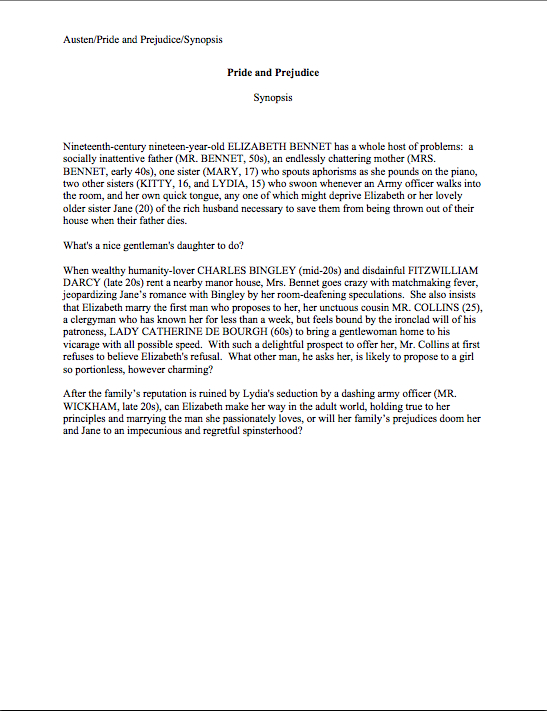
Why might our Millicent instantly take umbrage at this alternate formatting? Chant it with me, long-time readers of this blog: the only time business formatting (i.e., non-indented paragraphs) is acceptable is in business letters (but not query letters or personal correspondence) or e-mails. Because folks in the industry are aware of that, there is a well-established publishing tradition of regarding block formatting as the structural choice of the illiterate.
So the disturbingly common practice of submitting a block-formatted synopsis (“Well, it’s not a manuscript page, so why should it be formatted like one?”) or query letter (“It’s a business letter, isn’t it? I’m trying to break into the book-writing business.”) is — how shall put this delicately? — a really bad idea. Remember, everything in a query or submission packet is a writing sample. Format the constituent parts so they will convince Millicent of your deep and abiding commitment to excellence in the written word.
As in manuscript, the author’s contact information does not appear on the first page of the synopsis. Unlike the first page of a manuscript, however, the title of the book should appear on the first page of a synopsis, along with the information that it IS a synopsis.
Hey, Millicent has a lot of pieces of paper littering her desk. Do you really want yours to go astray — or be mistaken for a page of your manuscript?
Worried about what might happen to all of that formatting if you e-mail your 1-page synopsis? Relax: if it’s a requested synopsis, you’ll be sending it as a Word attachment, anyway.
If the synopsis will be accompanying an e-mailed query, you’re still going to want to write it initially in Word. As with manuscript pages, if you format your synopsis like this in Word, copy it, and paste it into the body of an e-mail (as many agencies’ querying guidelines now request), much of the formatting will remain intact: indented and double-spaced. Easy as the proverbial pie. Of course, the slug line — the author’s last name/title/page # that should appear in the header of every page of your writing you intend to submit to professional readers — won’t appear in the e-mailed version, nor will the margins, but you can live with that, can’t you?
More to the point, Millicent can — much, much better, usually, than with a block-formatted synopsis. The fewer provocations you can give for her to start stomping on nearby buildings, the better.
I see some of the sharper-eyed among you jumping up and down, hands raised. “Anne! Anne!” the eagle-eyed shout. “That’s not a standard slug line in your first example! It says Synopsis where the page number should be! Why’d you do it that way? Huh? Huh?”
Well caught, eager pointer-outers. I omitted the page number for the exceedingly simple reason that this is a one-page synopsis; the slug line’s there primarily so Millicent can figure out whose synopsis it is should it happen to get physically separated from the query or submission it accompanied. (Yes, it happens. As I MAY already have mentioned, Millie and her cronies deal with masses and masses of white paper.)
If this were a multi-page synopsis, the slug line would include the page number, but regardless of length, it’s a good idea to include the info that it is a synopsis here. That way, should any of the pages mistakenly find their way into a nearby manuscript (again, it happens), it would be easy for Millicent to spot it and wrangle it back to the right place.
Sometimes, it seems as though those pages have a life of their own. Especially when the air conditioning breaks down and someone in the office has the bright idea of yanking the rotating fan out of the closet. Or Godzilla decides to take a stroll down a nearby avenue, shaking everything up.
Oh, you may laugh, but think about it: like a manuscript, a query or submission synopsis should not be bound in any way, not even by a paper clip. So if a synopsis page does not feature either the writer’s name or the title of the work (and the subsequent pages of most query synopsis often fail to include either), how could Millicent possibly reunite it with its fellows if it goes a-wandering?
Heck, even if it’s all together, how is she supposed to know that a document simply entitled Synopsis and devoid of slug lines is describes a manuscript by Ignatz W. Crumble entitled WHAT I KNOW ABOUT EVERYTHING AND YOU SHOULD, TOO?
Don’t make Millicent guess; she may have had a hard day. Unidentified pages tend to end up in the recycling — or, if the Millicent happens to work in one of the many, many agencies that does not recycle paper (you’d be amazed), in the trash.
A second (or third, or fifth; extrapolate) page should also look very similar to any other page of standard-formatted manuscript, with one vital exception: the slug line for a synopsis should, as I mentioned above, SAY that the page it decorates is from a synopsis, not a manuscript, in addition to displaying the author’s last name, the title of the book, and the page number. (If you don’t know why a slug line is essential to include in any professional manuscript or why anyone would name something on a pretty page of text after a slimy creature, please see the SLUG LINE category on the archive list conveniently located at the lower right-hand side of this page.)
One caveat: if you are planning to submit a synopsis to a contest, double-check the rules: many literary contests simply disqualify any entry that includes the entrant’s name anywhere but on the entry form. (This is a sign of honesty in a contest, incidentally; it’s substantially harder to rig the outcome if the judges don’t know which entrant wrote which entry.) If you’re entering a name-banning contest, you should still include a slug line, but omit the first part: TITLE/SYNOPSIS/PAGE #.
Okay, some of you have had your hands in the air since you read the example above. “But Anne,” the tired-armed point out, “aren’t you ignoring the giant lizard in the room — or, in this case, on the page? You seem to have given some of the character names in all capital letters, followed by their ages in parentheses. Why?”
I’m glad you asked. It’s not absolutely necessary, technically speaking, but most professional fiction and memoir synopses capitalize the entire name of each major character the first time it appears. Not every time, mind you; just the first.
Why only the first? To alert a skimming agent or editor to the fact that — wait for it — a new character has just walked into the story.
Because Millicent might, you know, miss ’em otherwise. She reads pretty fast, you know.
It is also considered pretty darned nifty (and word-count thrifty) to include the character’s age in parentheses immediately after the first time the name appears, resulting in synopsis text that looks something like this:
ST. THERESA OF AVILA (26) has a problem. Ever since she started dating multi-millionaire GEORGE ARMSTRONG CUSTER (82), all of her friends have unaccountably decided that she is mercenary and hates Native Americans. Apart from JEANNE D’ARC (30), her wacky landlady-cum-bowling-partner, who uses every opportunity to pump Theresa for man-landing tips, none of the residents of Theresa’s swanky Upper East Side co-op are even speaking to her — at least until they start desperately vying for invitations to her exclusive wedding extravaganza, a lavish event to be held onstage at the Oscars, with THE REVEREND DOCTOR OWEN WILSON (44 if he’s a day) officiating. How will Theresa find a maid of honor — and if she does, what will her jealous old boyfriend GOD (∞) do in response?
Should any of you out there think you’re up to rounding out the plot above into some measure of coherence and submitting it, please, be my guest. Really. I’d love to read it.
For the rest of you, please note what I have done here: in preparing a synopsis for a comedy, I have produced — sacre bleu! — a humorous treatment of the material. Brevity need not be the death of wit.
And if I were creating a synopsis for a steamy romance novel with the same premise (although I tremble to think what a sex romp with that particular cast of characters would entail), you can bet your last wooden nickel that I would take some writerly steps to make my reader’s mouth go dry and his breath become short while perusing it.
Would I do this because I’m wacky? No, because — sing it out now, long-time readers — in a query or submission packet, the synopsis is a writing sample.
Oh, had I mentioned that fourteen or fifteen times already in this series? Well, it cannot be said too often, in my opinion. The sensible writer aims to use the synopsis to demonstrate not only that it is a good (or at least marketable) story, an attention-grabbing yarn peopled with fascinating, well-rounded characters, but that the s/he is a terrific storyteller.
I heard that monumental collective gasp of dread. Don’t worry — in the days to come, I shall be talking about ways in which you can tweak your synopsis in order to convey that lovely impression.
For the nonce, let’s take a quick field trip back to yesterday’s examples of a not-so-hot 1-page synopsis. Now that you know what Millicent is expecting to see, do you notice any formatting problems here?
If you immediately leapt to your feet, screaming, “It doesn’t have a slug line! It doesn’t have a slug line!” award yourself a gold star for the day. Make that two if you also bellowed that it doesn’t say anywhere on the page that it is a synopsis.
Take a medal out of petty cash if you noticed that the pages are not numbered: a major no-no in any submission, ever, and one of the more common mistakes. And yes, you should number it (although technically, it’s optional for a one-page synopsis — and no, you should not number it consecutively with the manuscript, unless a contest rules SPECIFICALLY tell you to do so. Just as the first page of Chapter 1 is always page 1, regardless of what may come before it in a submission packet, the first page of a synopsis is always page 1.
Top yourself with a halo if you also discovered that Aunt Jane made the rookie mistake of adding her name to the synopsis anywhere but in the slug line. For book-length works, the first page of text — regardless of whether it is in the manuscript, the synopsis, or any other requested materials — is not a title page.
Don’t treat it as if it were one; it looks unprofessional to the pros. Save your contact information for your query or cover letter and your title page.
Everyone happy with his or her score on that quiz? Excellent. Let’s tackle yesterday’s other negative example:
Where do we even begin? Millicent would almost certainly not even read this one — in fact, she might burst into laughter from several paces away. Any guesses why?
Well, for starters, it starts too far down on the page, falling into the same title-page error as the previous example. It’s the over-the-top typeface, though, and the fact that the page uses more than one of them, that would set Millicent giggling and showing it to her coworkers.
Oh, and it doesn’t contain a slug line or numbering, either. But I doubt Millicent would even notice that in mid-guffaw. Or while she is crying, “Next!”
It makes one other error for a fiction synopsis, a subtler one — and this one may surprise you: it mentions the title of the book in the text of the synopsis.
Why is this a problem? Well, for the same reason that it’s considered unprofessional to begin the descriptive paragraph in a query letter with something like LETTERS FROM HOME is the story of…: it’s considered stylistically weak, a sign that the synopsis is talking about the book instead of getting the reader involved in the story. Or, to put it another way, and a bit more bluntly: a fiction synopsis is supposed to tell the story of the book; one that pulls the reader out of the story by talking about it at a distance tends not to do that well.
And anyway, the title is already both at the top of the page (and SHOULD be in the slug line). Why, Millicent wonders impatiently, cradling her too-hot latte until it cools — she’s learning, she’s learning — would the writer WANT to waste the space and her time by repeating the information?
“Wait just a minute, Anne,” I hear some of my former questioners call from the rear of the auditorium. “You’re talking about the cosmetic aspects of the query synopsis as though it were going to be judged as pitilessly as the manuscript I’m hoping Millicent will ask me to submit. Surely, that’s not the case? The synopsis is just a technical requirement, right?”
Um, no. As I said, it’s considered a WRITING SAMPLE. So yes, the writing in it does tend to be judged — and dismissed — just as readily as problematic text anywhere else in the query packet.
Sorry to be the one to break that to you. But isn’t it better that you hear it from me than to be left to surmise it from a form-letter rejection? Or, as is more often the case, NOT surmise it from a form-letter rejection and keep submitting problematic synopses?
What? I couldn’t hear your replies over the deafening roar of aspiring writers all over the English-speaking world leaping to their feet, shouting, “Wait — my query or submission might have gotten rejected because of its formatting, rather than its writing or content?”
Um, yes — did that seriously come as a surprise to anyone? Oh, dear: I guess it really is time for a Formatpalooza.
While my former questioners are frantically re-examining their query packets and rethinking their former condemnations of Millicents, is anyone harboring any lingering questions about submission formatting? This would be a great time to ask, because next time, we’ll be leaving technicalities behind and delving into the wonderful world of storytelling on the fly.
After I trample that one last cottage on the edge of time. If I’m on a rampage, I might as well be thorough. Keep up the good work!



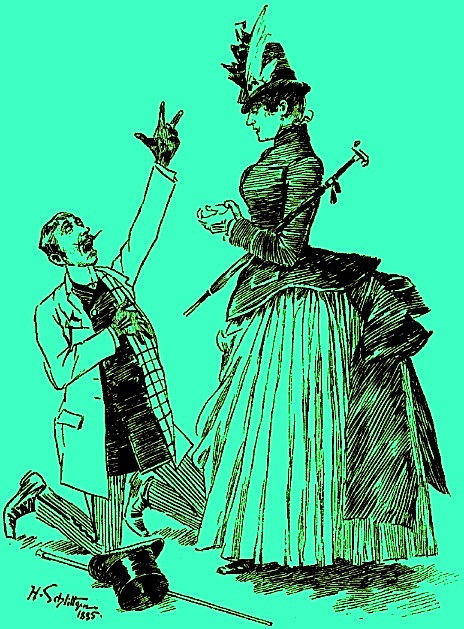

 No matter how many pages or extra materials you were asked to send, do remember to read your submission packet IN ITS ENTIRETY, IN HARD COPY, and OUT LOUD before you seal that envelope. Lest we forget, everything you send to an agency is a writing sample: impeccable grammar, punctuation, and printing, please.
No matter how many pages or extra materials you were asked to send, do remember to read your submission packet IN ITS ENTIRETY, IN HARD COPY, and OUT LOUD before you seal that envelope. Lest we forget, everything you send to an agency is a writing sample: impeccable grammar, punctuation, and printing, please.
 No matter how many pages or extra materials you were asked to send, do remember to read your submission packet IN ITS ENTIRETY, IN HARD COPY, and OUT LOUD before you seal that envelope. Lest we forget, everything you send to an agency is a writing sample: impeccable grammar, punctuation, and printing, please.
No matter how many pages or extra materials you were asked to send, do remember to read your submission packet IN ITS ENTIRETY, IN HARD COPY, and OUT LOUD before you seal that envelope. Lest we forget, everything you send to an agency is a writing sample: impeccable grammar, punctuation, and printing, please.





